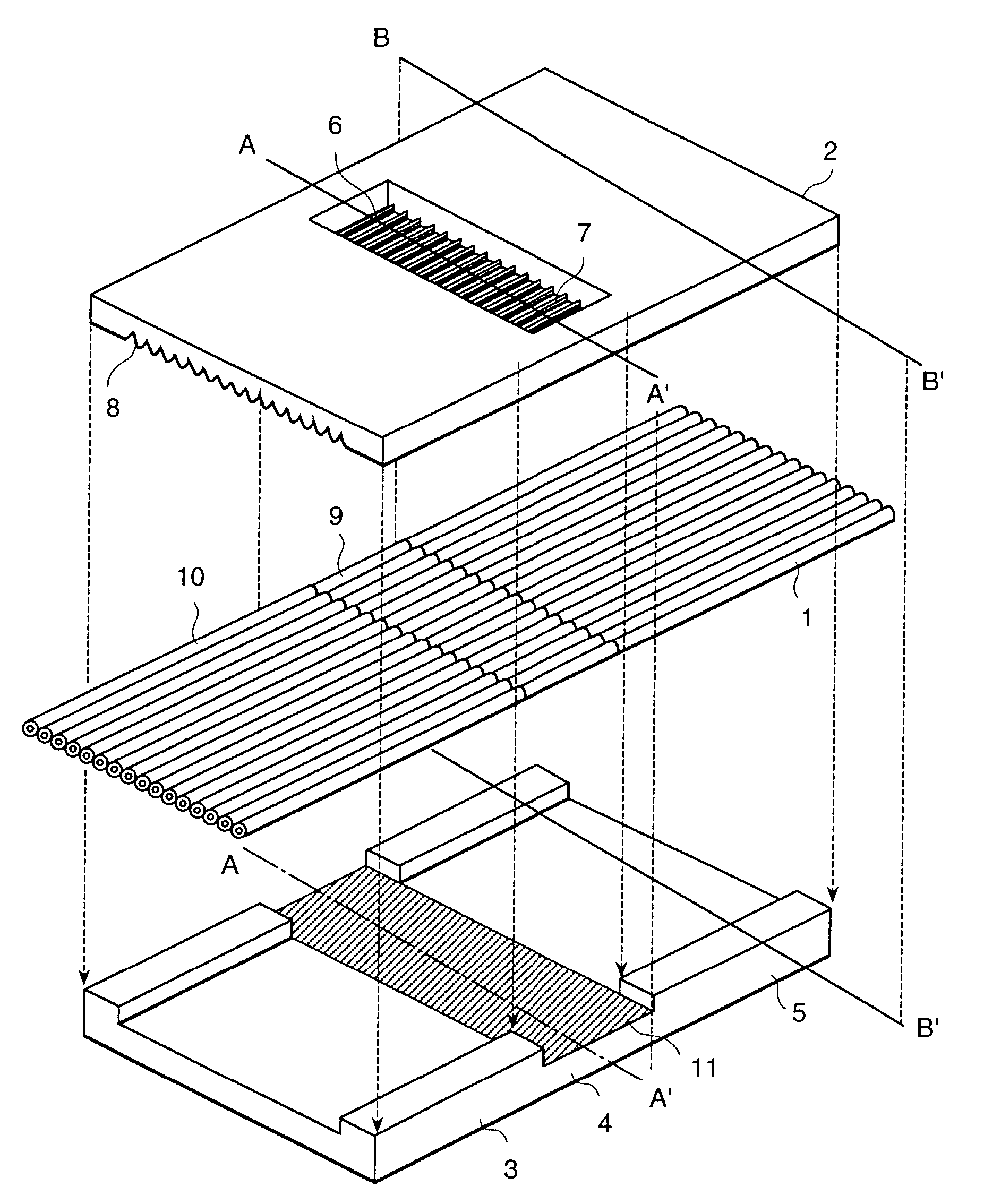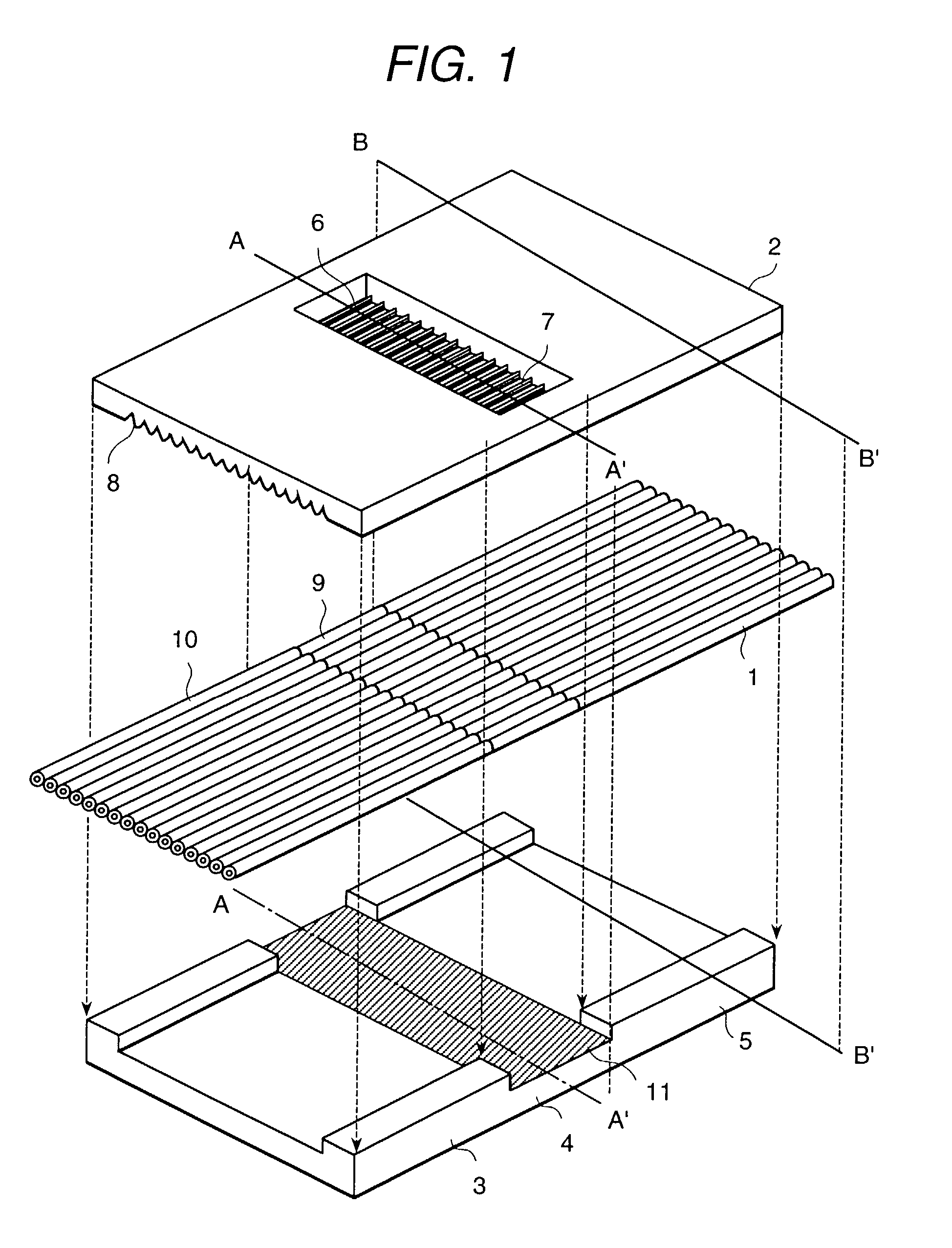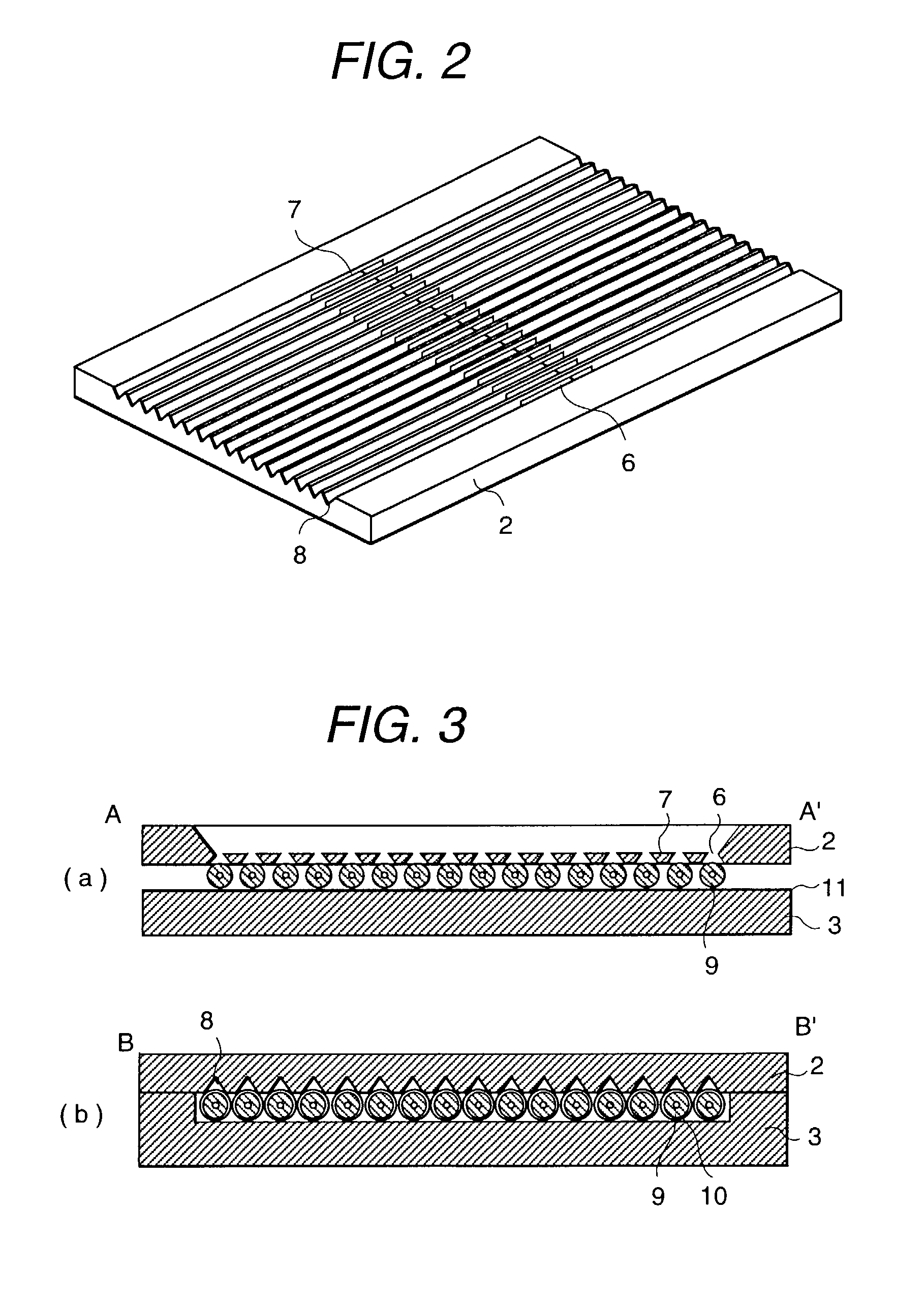Capillary array unit electrophoretic device comprising the same
- Summary
- Abstract
- Description
- Claims
- Application Information
AI Technical Summary
Benefits of technology
Problems solved by technology
Method used
Image
Examples
embodiment 1
[0028] [Embodiment 1]
[0029] FIG. 1 is a configuration drawing representing the window unit as a first embodiment of the present invention. The window unit comprises a capillary 1, window substrate 2, glass substrate 3, etc. as shown in FIG. 1. FIG. 2 is an explanatory diagram of the window substrate 2 of FIG. 1 viewed from a different direction. FIG. 3 is cross sectional views taken long lines A-A' and B-B' of the window unit of FIG. 1. FIG. 3(a) and FIG. 3(b) correspond to a laser irradiated region 4 and non-irradiated region 5 of FIG. 1, respectively.
[0030] As shown in FIG. 1, the window substrate 2 is a silicon substrate. Sixteen openings 6 passed by light are formed in a straight line at the same dimensional interval as that for the arrangement of the capillaries 1, using silicon anisotropic etching technology characterized by excellent processing accuracy. V-grooves 8 having a V-like configuration in cross section are formed on the front and back of the openings 6 corresponding...
embodiment 2
[0033] [Embodiment 2]
[0034] FIG. 5 is a configuration drawing representing the window unit as a second embodiment of the present invention. Its difference from the first embodiment is that a transparent substrate 12 such as a glass substrate for transmitting light is used as a window substrate, and the low light-transmittance member 13 is created, for example, by vapor deposition. The first embodiment is configured to have an opening 6, but the present embodiment uses a non-penetration window 14. This non-penetration window 14 is formed by removing the low light-transmittance member 13 by etching to ensure that it is formed at the same interval as that of the arranged capillaries 1. A non-penetration window frame formed cut-off area 15 partitions this non-penetration window 14, thereby reducing transmission of light through the non-penetration window frame formed cut-off area 15, and minimizing the background light. In the window unit as the second embodiment, almost the same effect...
embodiment 3
[0036] [Embodiment 3]
[0037] FIG. 7 is a configuration drawing representing the window unit as a third embodiment of the present invention. The difference from the aforementioned embodiment 2 is that non-penetration windows 14 are formed on the transparent substrate 12 such as a glass substrate for transmitting light as window substrate, and V-grooves 8 having a V-like configuration in cross section are formed on the front and back of the non-penetration window 14 in order to position the capillary 1 sequence. In the window unit as the third embodiment, the same effects as those of the second embodiment can be obtained. Further, V-grooves 8 are provided to position the sequence of capillaries 1, thereby reducing the misalignment of the capillaries and improving the workability.
[0038] FIG. 7 shows the non-penetration window 14 configured in a rectangular form, but the form is not restricted to a rectangular one. The number of non-penetration windows 14 is not limited to ten. The same ...
PUM
 Login to View More
Login to View More Abstract
Description
Claims
Application Information
 Login to View More
Login to View More - R&D
- Intellectual Property
- Life Sciences
- Materials
- Tech Scout
- Unparalleled Data Quality
- Higher Quality Content
- 60% Fewer Hallucinations
Browse by: Latest US Patents, China's latest patents, Technical Efficacy Thesaurus, Application Domain, Technology Topic, Popular Technical Reports.
© 2025 PatSnap. All rights reserved.Legal|Privacy policy|Modern Slavery Act Transparency Statement|Sitemap|About US| Contact US: help@patsnap.com



